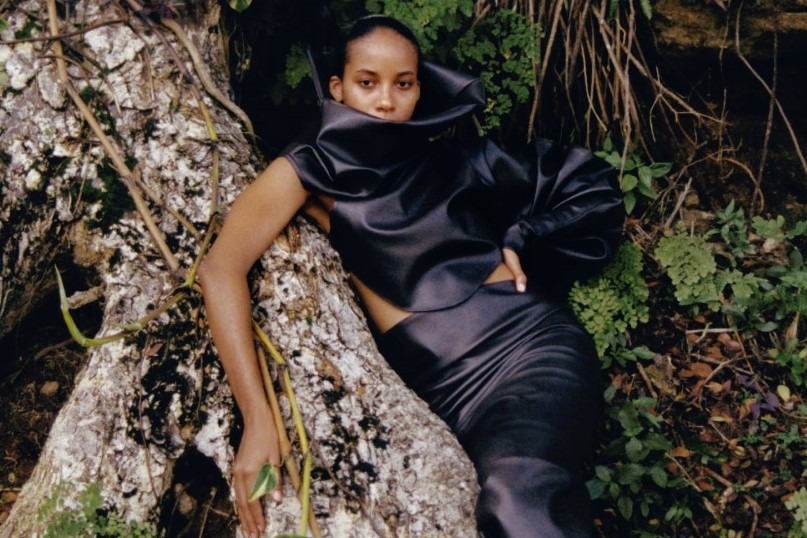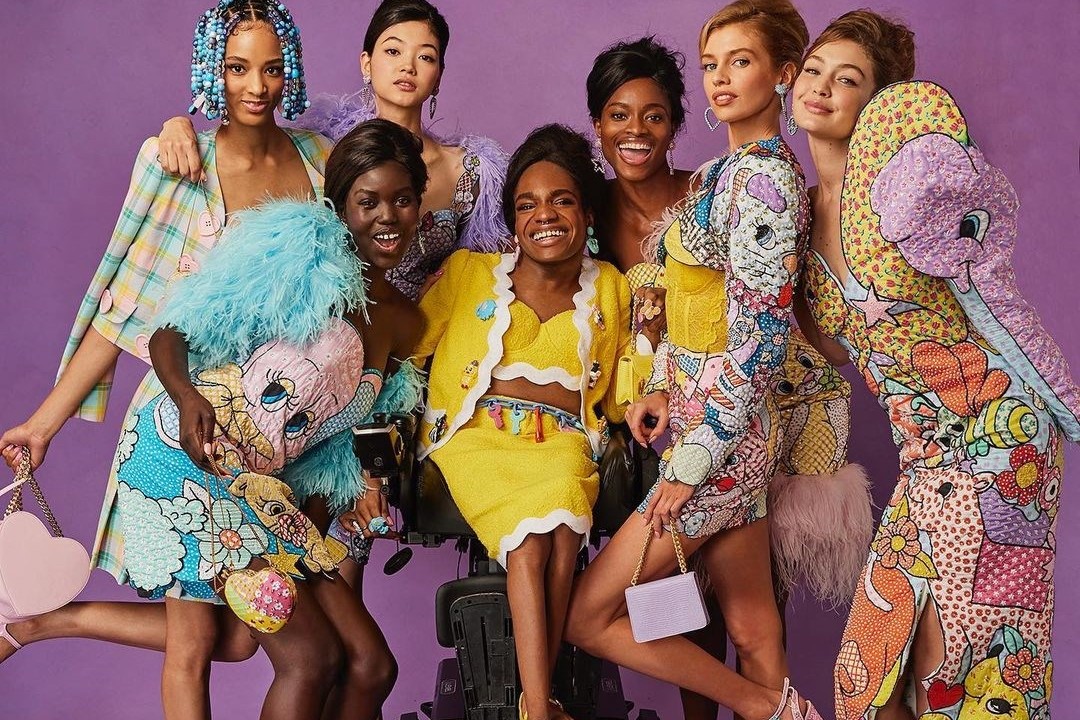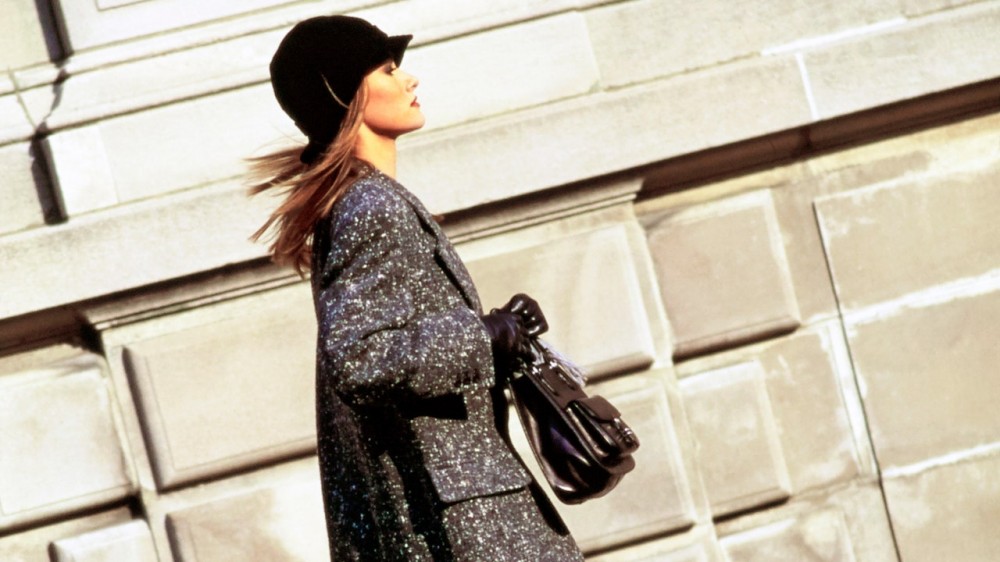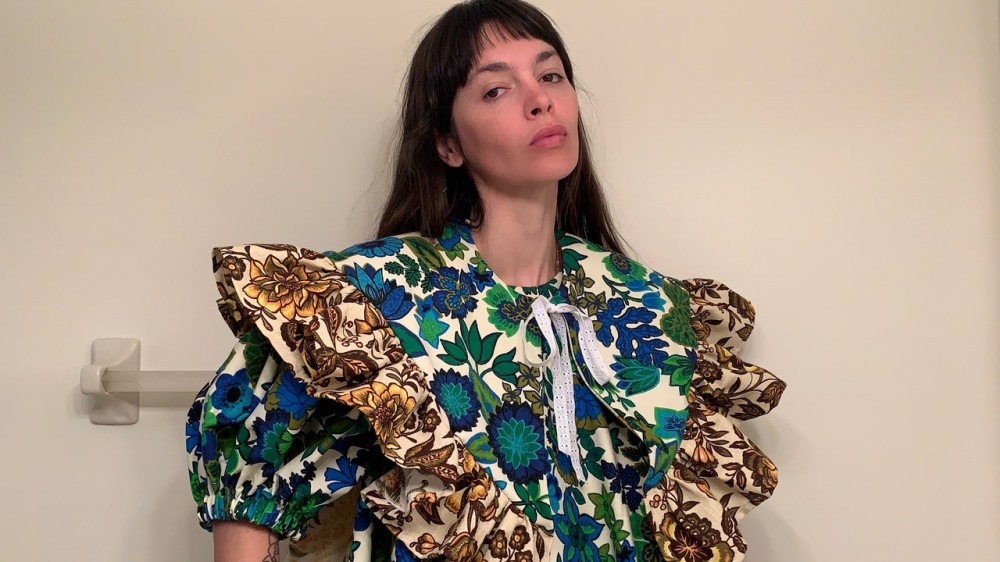
Antoine Gregory is celebrating the past, present, & future of Black fashion
The Black Fashion Fair’s new publication, Volume 0, brings together global creatives including Kerby Jean-Raymond, Bianca Saunders, Mowalola, and more
Community is not only a place of comfort for those within, but also a form of legacy for those outside and beyond to understand movements and moments within history. The Black Fashion Fair is one such movement, a community of Black designers, image makers, and creatives that was initially triggered – like most great things are – by a Twitter thread in 2016.
Founder Antoine Gregory, a multi-hyphenate fashion creative, stylist, and brand director has curated a one-stop-shop to tell the ‘often forgotten stories of Black designers while also documenting and preserving Black fashion: past, present, and future’. Where the impact of Black culture across wider culture and fashion society has been immeasurable, few occasions have allowed Black designers the agency or ownership over their cultural milestones, instead sweeping the creators and their communities under the rug or limiting their work to certain audiences.



The Black Fashion Fair is inclusionary in its very purpose, aiming to involve everybody interested in the contributions and influence of Black people in fashion, art, design, and popular culture. Though initially a directory, it evolved into a global community, with Gregory harbouring plans for it to eventually become an institution. But for now, there’s a new book, which aims to amplify the voices of those who have historically been erased from these narratives.
Created with support from Warby Parker, Volume 0: Seen sees a hand-picked team – including Atlanta-based photographers AB + DM, who join as directors of art and photography – come together across 200 pages to spotlight Black fashion’s past, present, and future. Featuring work by established and emerging creatives such as LVMH Prize finalist Bianca Saunders, former Fashion East-er Mowalola Ogunlesi, Brandon Blackwood, and Anifa Mvuemba of Hanifa, the book is also heavy with essays and interviews with Black writers, scholars, and activists like Rikki Byrd and Bethann Anderson.

There’s also three physical covers, with two featuring supermodels Maria Borges and Aleya Ali (as shot by AB+DM), and one featuring Joan Smalls (shot by Quil Lemons), plus a digital iteration by former Dazed 100er Amber Pinkerton. Inside, editorials are brought to life through looks by revered Black designers including Pyer Moss, Theophilio, Luar, and Sergio Hudson.
As the publication gets its launch, we caught up with the Black Fashion Fair founder to talk archiving, imagining, and how the whole project came together.

Hi Antoine! You’ve spoken about the importance of this publication in its tangibility, and bringing the ethos and values behind Black Fashion Fair to life in something physical. Why was an IRL publication more important than an online film or digital zine for example?
Antoine Gregory: [Because] I couldn’t walk into a bookstore or a library and find a book on Black fashion, style, and culture. There was no one place to reference or explore or find something like what we have created here. In order for us to create value for Black fashion designers, artists, and image makers, there has to be something you can touch, feel, and see beyond any screens – an artefact that can be passed on or shared around. In being passed on, it creates value as a physical item but also as something to be discussed amongst people or for a person to pore over in detail.
Having a physical publication also showcases the existence of the amazing roster of talent that has been curated – in the mix of emerging and established models, writers, photographers and designers alike. There is something global and communal not only about who is featured in the publication but in the idea of a physical and tangible object that can be passed on.
The publication feels really global and there’s some amazing creatives featured – from fashion heavyweight Kerby Jean-Raymond of Pyer Moss, to rising British star Bianca Saunders. How did you decide who to involve?
Antoine Gregory: I pride myself on being tapped into the culture and community, but also have to give major props to AB + DM. We started off by curating a list of people we thought were brilliant but didn’t always have the access or representation their work deserved, and built it from there. We started shooting in late November and throughout December so it’s all happened quite quickly. I’m also immensely grateful to the designers who I have personal relationships with, for trusting and loaning us their clothes – Grace Wales Bonner lent us a while collection to take to Jamaica to shoot. I think the implicit trust that the designers we’ve worked with speaks volumes to the community-driven institution we aspire to be.

The international community you’ve built both online and off seems so vast, yet overlaps so much. Have you seen a domino-effect when it comes to the communities based on or initiated by BFF?
Antoine Gregory: Absolutely! All of the designers we’ve featured are friends and collaborators and have shared various resources – factories, embroiderers, networks. There is definitely a camaraderie of sorts where we support one another in every way possible as part of a family. Looking through Volume 0, all of the designers have worked with us before so there is a long-standing relationship of mutual growth and development that other like-minded people gravitate towards.
Unlike other fashion shoots where photographers are there to execute the vision of the fashion editor or whoever is commissioning, you notably gave photographers free reign and complete agency during shoots. Why is that important to you?
Antoine Gregory: I wanted Black image makers to have agency to create images that they want to see, which again is based on a mutual trust. I briefed them with a theme and let them go ahead and create, and the result was beautiful images that put value on Black designers and their work – the Pyer Moss Couture 001 collection , which ‘spotlighted the inventions and innovations that Black people have contributed to modern everyday life’ for example, was not only beautiful but had such historical significance that could truly be appreciated and captured through the lens of a Black image maker, as it was already out and hadn’t been pulled for any editorials or received much mainstream attention.
In the same vein however, Black designers and image-makers are often stripped of their agency in that their work is perceived to be only for Black people as opposed to for everybody. Blackness is not a monolith or a universal experience and whilst some designers may centre their Blackness in their work and others may not, both deserve to be appreciated and consumed as opposed to cordoned off and limited to Black audiences alone. Giving Black designers and image makers value lies in protecting and promoting that agency.
“Blackness is not a monolith or a universal experience and whilst some designers may centre their Blackness in their work and others may not, both deserve to be appreciated and consumed as opposed to cordoned off and limited to Black audiences alone” – Antoine Gregory
Why is storytelling in the way that you have so important when it comes to Black art?
Antoine Gregory: Storytelling is something that our people have always done. It was the only way to pass on our histories, we didn’t have written history or physical archives, and so oral storytelling was at most, the only way to preserve and pass down history. I decided that simply telling stories isn’t enough, but that a visual history is vital. When I was studying fashion in higher education there wasn’t much mention of Black creators, designers, or image makers in the curriculum, but it was something that I had to go and research in my own time, sometimes stumbling on things incidentally.
For example, my initial introduction to André Leon Talley was Mariah Carey, simply because I was a fan of her music and he styled her during her campaign for her The Emancipation of Mimi album. Any mention of Black designers also explores a limited scope, it’s always either Patrick Kelly or Stephen Burrows – even though there were and have been countless Black designers beyond those two names. Even with that limited visibility, the work of Kelly and Burrows wasn’t as heavily archived or photographed as much as their white counterparts’ work was, so there’s far less to reference.
The Black Fashion Fair’s Volume 0 documents Black fashion history as it exists in the moment right now as it happens. We’re not waiting for what’s happening to be wistfully reminisced on or archived 20 years later. We’re existing while we have the space and opportunity to shine a light on the amazing designers like Isaia Rankin, who most people probably wouldn’t even know, as well as the current designers that people are discovering today. Where Black designers in the past might have faded into obscurity due the fact that nobody was documenting their work at the time and a lack of preservation of the actual garments, storytelling keeps those designers and their work alive in a way that stands the test of time.

You mentioned your time in higher education and the lack of Black people in your studies, as well as around you. A graduate of the Fashion Institute of Technology, you’ve pushed educational initiatives through the Black Fashion Fair such as a partnership with the Brooklyn Sewing Academy…
Antoine Gregory: I graduated twice from FIT (in Fine Art and Fashion Business Management), and on both occasions was one of two or three Black people in my class. I knew from there that my experience would be reflected in my career, and it was the case where I was at times, the only Black person at a company. It’s not fun to be the only person that looks like you, or have to explain to a Professor why Rick Ross is my reference in work.
It’s this experience of being at one of the top art and design schools in the world that has fuelled the importance of pushing for other people who look like me to have the opportunity to occupy those spaces. Through the partnership with the Brooklyn Sewing Academy, younger aspiring or burgeoning fashion students learn about fashion illustration sewing and pattern making for no cost. These are the sort of skills that in turn help to develop a strong portfolio which is essential for getting through the door – that equality of access and opportunity is what we’re pushing. Ultimately, I want BFF to become its own institute of research documentation, educatio, and design. The ultimate goal is for us to offer those types of programmes that promote access into spaces that we have historically been excluded from.
What do you want people to take away from the book?
Antoine Gregory: This is proof of concept. What we are doing and being seen to be doing is important, so many people needed this to exist. It also serves as a call to action to the fashion industry. In compiling a 200 page directory brimming with Black talent, with two of the biggest models of our time on the covers – there is no excuse of ‘not being able to find’ any black designers. Give Black designers and imagemakers the chance to create and have agency over their work. Volume 0 has set the blueprint for what we hope to further as a publication and an institution.




